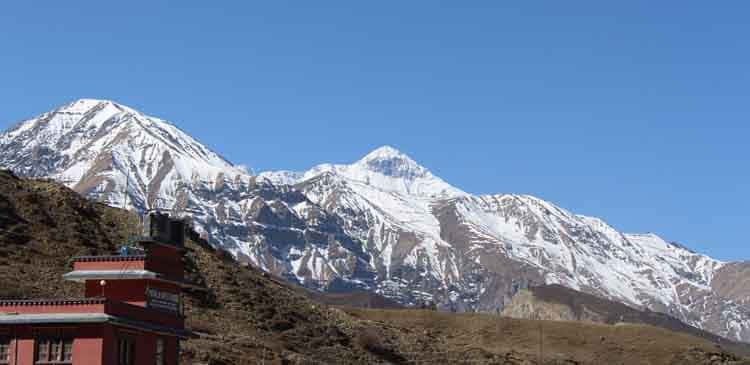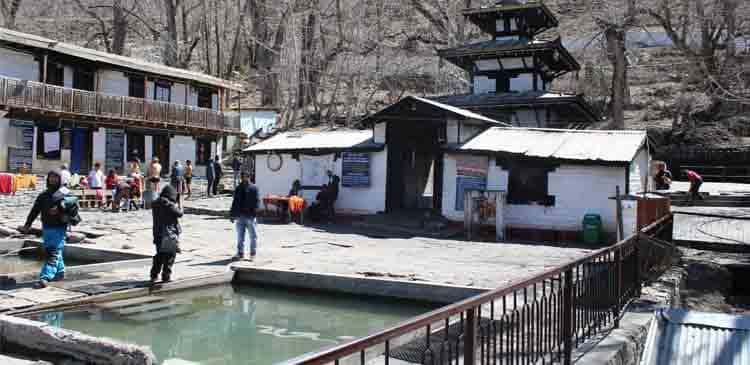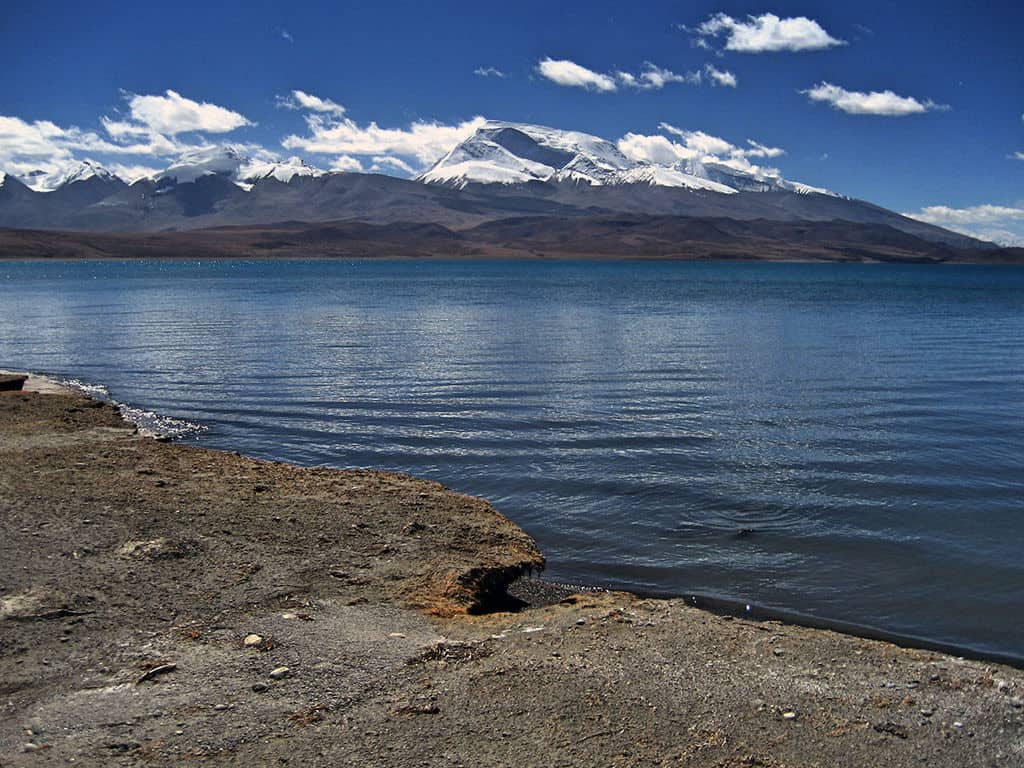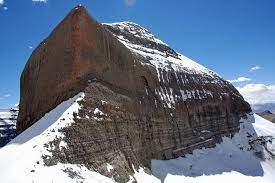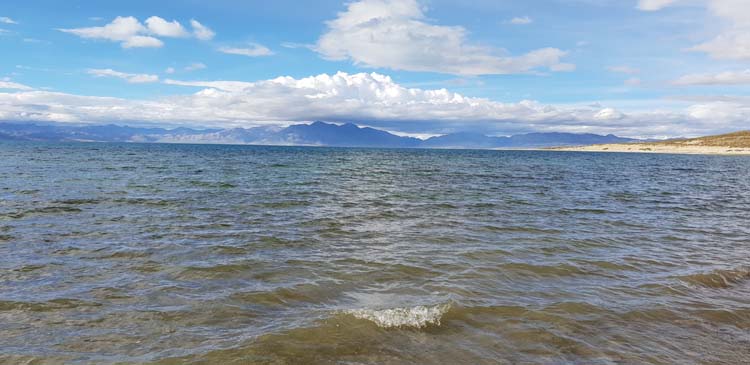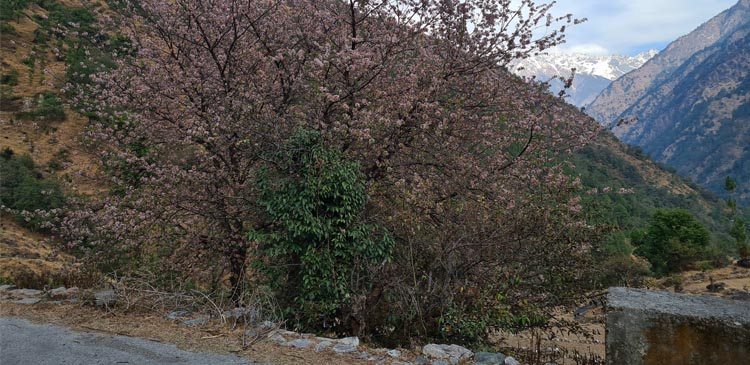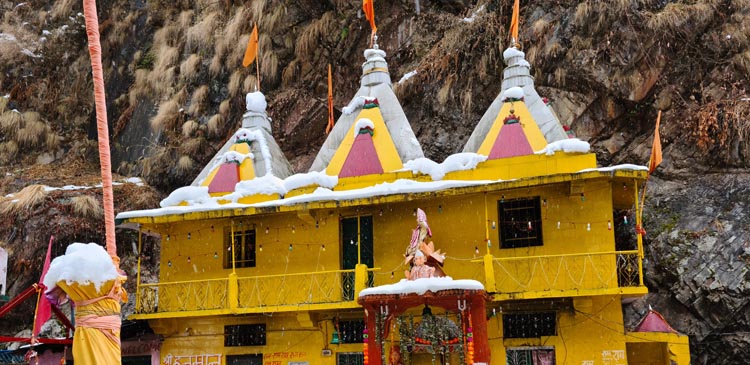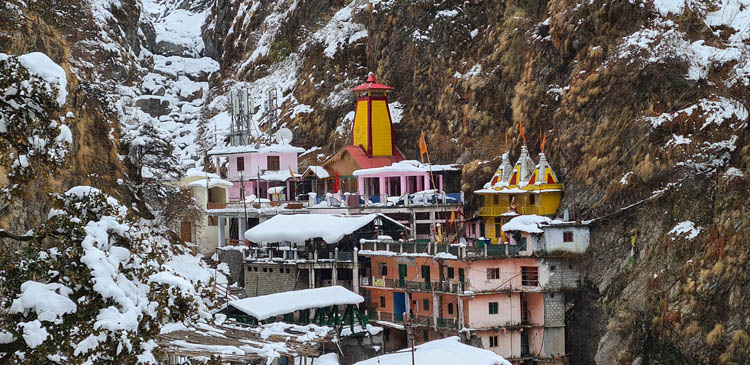Muktinath – One of the holiest places on earth receives millions of footfalls every year. As it’s a sacred site and considered as a place to attain salvation, it’s a common perception that only elders should visit this place. However, we don’t agree on this.
As per us, Muktinath trek is something that every young blood should try at least once in a lifetime – The roads that take you here are filled with many hidden thrilling opportunities, breath-taking views, amazing landscapes, and adventure that every youth should encounter once.
To enjoy this trek, you can either choose Annapurna Circuit trek or opt for Jomsom-Muktinath trek. The first option is of longer days and gives you more opportunities to explore the beauty of this region while the latter option lasts only for 4 days and can be done by all those who don’t have much time to invest in yet want to encounter some of most gorgeous nature’s wonder.
No matter which option you choose, we must say that this trek is going to be one of the most thrilling and adventurous things that you can do during your youth.
Here are our reasons for saying this:
Nature like never before
As they say, come to nature’s lap to get healed completely. Nature has the solution to all your worries. A close encounter with nature can fill your heart with amazing contentment. Muktinath Temple is located in the most picturesque desert of the Mustang district. Here, you’ll be stunned to see raw yet ravishing nature.
From mountains to lush green landscapes, from dense forest to scattered desert, from sub-tropical forest to alpine forests, you’ll witness every version of nature during this trek.
On one hand, you’ll see all colored flowers while passing from the forest area while you will be surrounded by the grey colures mountains all around. In short, more than a trek, it‘s way to witness the remote yet ravishing nature from close and feel rejuvenated from the core. Muktinath Yatra has for long been considered as heaven that can refresh one’s soul and its stunning nature simply adds to its beauty.
The panoramic view of peaks
During the trek, you’ll get an opportunity to witness the beauty of some of the most gorgeous peaks like Thorong Peak, Nigiri, and Dhaulagiri. Then there are Annapurna and Dhaulagiri peaks as well.
Can you imagine the view when Himalaya towers over you and you’re surrounded by snow-capped mountains by all sides?
Well, it’s beyond imagination. It’s worth exploring. Nowhere in the world can you find the breathtaking clicks for your Instagram as you’ll find en-route of Muktinath trek.
The ideal way to check the stamina
So, you are investing a lot of time in the gym and think that you’ve built up great stamina. This trek is the ideal way to give it a reality check. The Annapurna circuit trek stays somewhere for 15 days and you’ll walk around 250KM in total. It’s a lot of distance to cover via foot.
Plus, the rocky path and steep slopes are there to test your body’s balancing ability. Passing through all these paths would be the real test of your fitness. If you really are a fitness enthusiast then Muktinath trek should be in your bucket list for sure.
Get high at the Marpha
While your trek is on, you will cross a small yet significant place named, Marpha. Located in the lower region of Mustang, Marpha is the place where you’ll find the purest and high-quality. This small place is the epicenter of apple production and known for producing high-quality liquor across the world.
If you enjoy get high sometimes and are a beer/liquor lover then you’ll surely love this place. However, make sure that you should never get too high while you trek. Apart from tasting liquor at Marpha village, you can take a stroll in the apple orchards as well.
The charisma of Kali Gandaki River
During the trek, you’ll get to witness the grandeur of the Kali Gandaki River from close. As the trek follows the river bed, you must understand that you’ll be accompanied by water crackling sounds for a long time. The gushing water will keep you motivated to go on.
As you reach at the upper river area, you can get opportunities to find out the Shaligram, fossilized ammonite while the lower region is filled with warmth and generosity of Gurungs and Magars, Thakalis, and Lopa communities. There are many Buddhist villages situated near the river which are rich in culture and religion.
Mediate the right way
Your life back home is very stressful. Project deadlines, office politics, and mundane routine dull the zest of life from you and make you over-exhausted. Your mind and soul ultimate relaxation and nothing can help you in this as the quaint and calm monasteries and gompa located in the region.
During the trek, there are many monasteries where you can make a stop, meditate with the monks, and attain ultimate peace. Nestled amidst the remote nature and surrounded by the snow-peaked mountains, these monasteries are filled with peace that you’ll never find back home. These scenic monasteries will surely give you some of the best clicks for your social media platform and will grab many likes and shares.
A motorbike tour like never before
Last but not the least reason is that you can do Muktinath trek on a motorbike rather than on your foot and we must say that this would be the best bike tour of your life. Just meant for youth, these special motorbike tours run from Jomsom (a town located in Mustang district). So, you can opt for a Mustang valley motorbike tour to experience something extraordinary.
During the tour, you’ll get a chance to be awe-stricken by the view of the Machhapuchhre Mountain and Annapurna region. Exploring nature this way has its charm and can’t be compared with anything in the world.
We think that by now you must have known that Muktinath trek is not for all those elder people who want to get close with almighty. In fact, it offers a lot of adventure and thrill that can excite young blood for sure. So, book a Muktinath trek/tour today and get a unique experience that you’ll cherish for a lifetime.
